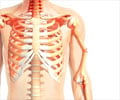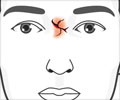The AMA has called for better coordination across the medical profession and other health providers in alerting patients to the early signs of osteoporosis.
“The release of the Australian Institute of Health and Welfare report on Arthritis and Osteoporosis in Australia (2008) is a reminder that we need to ensure we have sound arrangements for the long-term management of osteoporosis,” AMA President, Dr Rosanna Capolingua, said.“As our population ages, the number of people who have osteoporosis increases. Prevention is important as is early detection and good clinical supervision and management of patients at risk of fracture. This can make a real difference to quality of life. For those who have experienced their first fracture, assessment, management, rehabilitation and prevention of further fracture is essential. GP’s screen for osteoporosis and initiate treatment, educate patients on prevention and protection from falls and fracture and at the same time reduce the burden on the health care system.
“All minor fractures in at risk groups that are treated in hospital should be assessed for osteoporosis and must be followed up to avoid another, more serious fracture. After their first fracture, a person’s risk of a second fracture doubles. It is really important that these people are well managed to prevent the second fracture, for example, of their hip or pelvis, from occurring. GPs must be advised that their patient has had a fracture so that they can follow up, and fracture clinics can make a huge difference in helping people to reduce their risk factors for a second fracture, in the same way that cardiac clinics help heart attack patients avoid having another heart attack.
“About 600,000 Australians are listed as having osteoporosis but, because it has few clear symptoms other than a fracture, we fear many more may remain undiagnosed. While osteoporosis is commonly thought of as a condition in women, men are also susceptible.
“GPs are the first line of care for people with osteoporosis, advising on diet and exercise, treating minor fractures and prescribing appropriate medications.
“Early diagnosis and intervention is crucial for people who have risk factors. Medicare rebates for bone mineral density testing, and pharmaceutical benefits for medications, should be available before fractures occur.”
Advertisement
“More than $304 million of direct health expenditure in 2004-05 was for osteoporosis, with prescription pharmaceuticals making up almost three-quarters of this amount ($215 million). The red tape for prescribing these medications should be removed.
Advertisement
“This is a clear example of where doctors and patients can work together to deliver substantial and immediate benefits to patients and the overstretched health system.”
Source-AMA
SRM














